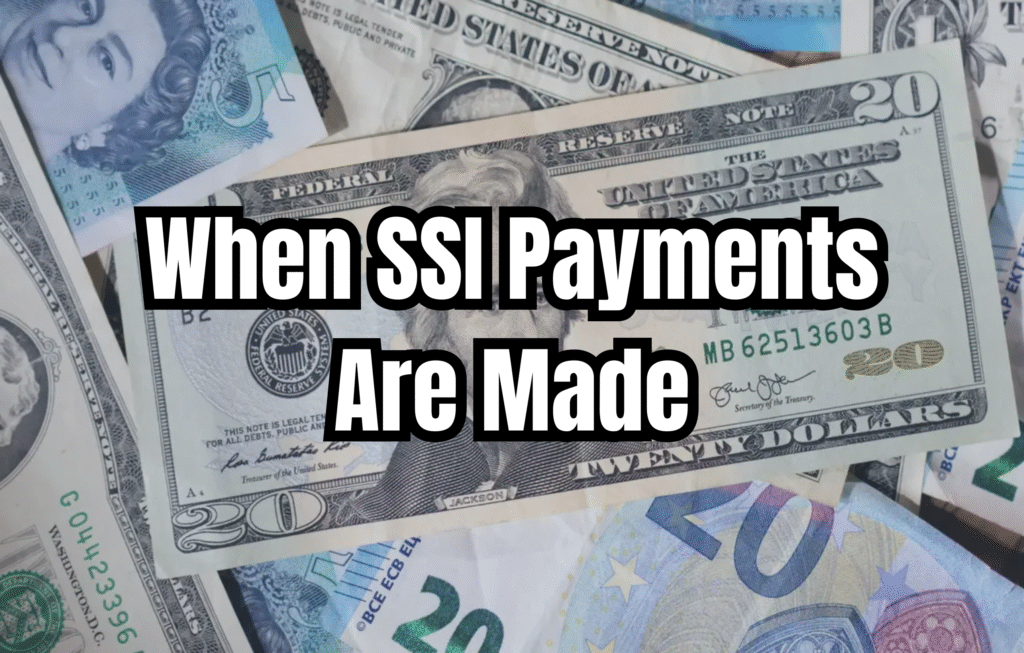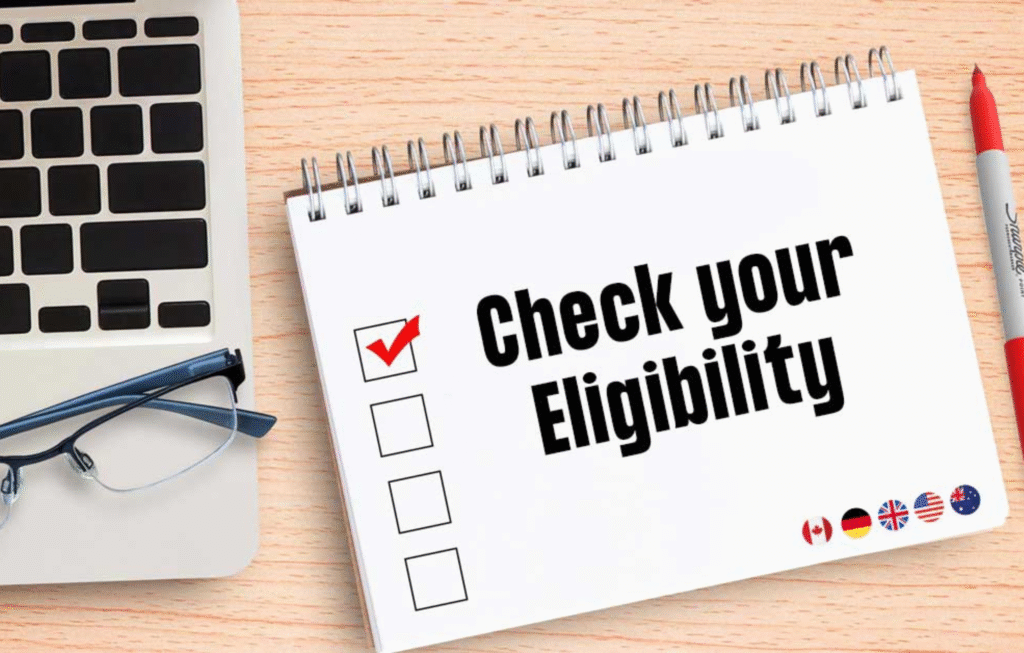What is SSI & What’s New for 2025
SSI stands for Supplemental Security Income. It’s a U.S. federal program, run by the Social Security Administration (SSA), intended to help people with little or no income and resources. It provides monthly payments to aged, blind, or disabled individuals to help with basic needs: food, shelter, and clothing. It is not based on your work history, unlike regular Social Security benefits.
For 2025, there has been a Cost‑of‑Living Adjustment (COLA) of 2.5%, and one result is that the maximum SSI payment for eligible couples is now $1,450/month.
Here are the recent, updated maximums:
- Individual: up to $967/month
- Couple: up to $1,450/month (if both spouses meet the requirements)
- Essential Person (someone who helps care for an SSI recipient): up to $484/month
Who Qualifies for the $1,450 SSI Benefit (Couples)
To be eligible for the full $1,450 monthly SSI benefit as a couple, you and your spouse must meet several criteria. These are the general rules as of 2025:
| Eligibility Factor | What It Means / Common Requirements |
|---|---|
| Age / Disability / Blindness | Either or both spouses must be aged 65+, or must be blind, or have a qualifying disability. |
| Income Limit | Countable income (wages, pensions, other benefits) must be below a threshold. If you have too much income, the SSI payment might be reduced. |
| Resource (Asset) Limit | For couples, countable resources generally must be $3,000 or less. Assets that are not counted may include your primary home, one car, personal effects, etc. |
| Citizenship / Residency | Must be a U.S. citizen or a qualified non‑citizen, and live in one of the 50 states (or DC / some territories). |
| Living Arrangement | Where you live and who pays for what (rent, utilities, food) can affect your SSI amount. If others help cover shelter or support, that may reduce your benefit. |
Note: Just because you meet all of these doesn’t always guarantee the full $1,450. The actual benefit you receive can be lower due to other income, help from others, or state supplements.
When SSI Payments Are Made

- SSI payments are usually paid on the 1st of each month. If the 1st falls on a weekend or federal holiday, the payment is made on the last business day before that.
- In some months, there may be a “double payment,” especially when a holiday causes early processing. For example, August 2025 had two payment dates (August 1 & August 29) because of how the SSA adjusted for a holiday.
- Make sure your banking or mailing info with SSA is up to date so payments go smoothly.
How Much Will You Actually Receive?
Even though $1,450 is the maximum for couples, many people receive less. The final amount you get depends on:
- Your countable income from all sources (including Social Security benefits, wages, pensions, etc.). Some income is excluded, but many parts are counted.
- Your living arrangements — whether you pay rent, share household costs, or someone else helps. These can affect how much is considered “need.”
- Any state supplements (many states add additional SSI payments beyond the federal base). These vary widely depending on where you live.
Step‑by‑Step Guide: Applying for the $1,450 SSI Payment (Couples)
If you believe you’re eligible, here’s how to apply (or verify your eligibility) to get the SSI benefit as a couple.
Step 1: Check Your Eligibility

- Determine whether you or your spouse is 65+, blind, or disabled.
- Calculate your combined income and resources — make sure you’re under the federal thresholds ($3,000 resources for couples, etc.).
- Check your citizenship or legal residency status.
- Evaluate your living situation: who pays rent, utilities, etc. This might affect how much they consider “in‑kind support” or other help.
You can use the SSA’s online tools (Benefit Eligibility Screening Tool) or call your local SSA office.
Step 2: Gather Required Documents
Collect all documents before applying, so your application process is smoother. Some of the typical documents you’ll need:
- Social Security number(s) for both spouses
- Proof of age or identity (birth certificate, passport, driver’s license)
- Proof of residency (lease agreement, utility bills, etc.)
- Proof of income — recent pay stubs, benefit statements, pensions, etc.
- Bank statements and documentation of other assets or resources (checking/savings, stocks, etc.)
- Medical proof, if claiming disability or blindness (doctor’s reports, medical records)
Step 3: Fill Out the Application
You can apply in one of these ways:
- Online via the SSA’s official website (ssa.gov) — they have SSI application forms.
- By phone: call SSA toll‑free at 1‑800‑772‑1213 (TTY 1‑800‑325‑0778) if you have hearing impairment.
- In person at your local Social Security office — sometimes better for complex cases or for handling documents. Make an appointment if possible.
Step 4: Attend Interview & Verification
After submitting your application, the SSA may require an interview (phone or in person) to verify details. During this they may ask:
- Questions about your income sources, assets, and living arrangements.
- You may need to provide additional documents.
- If it’s disability or blindness‑based, you’ll be asked to provide or retrieve medical records or have assessments.
Be timely in providing any requested info — delays here can delay benefit payments.
Step 5: Wait for Decision & Payment
- The SSA will review your application and documents. The approval process might take weeks or a few months depending on how complete your application is, whether more info is needed, etc.
- Once approved, payments are either direct deposited into your bank or via Direct Express card. Alternatively, paper checks if you don’t have bank account details on file.
- Be aware of payment dates (usually 1st of the month, or adjusted if holiday/weekend).
Tips & Things to Watch Out For

- State Supplements: Some U.S. states offer additional SSI payments beyond the federal amount. If you live in a state with such supplement programs, check whether you qualify. This can push your payment up to or near the full $1,450.
- Reporting Changes: If your income, living situation, or resources change, you must tell SSA. Failure to report changes can cause overpayments (which you may need to repay) or underpayments.
- Avoid Common Mistakes: Missing documents, incomplete application, wrong address, outdated bank or contact info—these can all delay your benefits.
- Check your State’s Rules: SSI is a federal program, but states may have additional rules, supplements, or different definitions of countable income/resources.
- Keep Records: Keep copies of your application, all documents submitted, and any letters you receive. Also monitor your SSA account online or by telephone.
Example Scenario
To illustrate, here’s a hypothetical example to show how the numbers might work for a couple:
- Two spouses, both 68 years old.
- They live in a state with no major SSI supplement.
- Their combined countable income (pensions + small part‑time work + Social Security) is under the income limit.
- Their countable resources (bank accounts, stocks) are under $3,000.
If everything checks out and SSA approves, their SSI payment could be $1,450/month federally. If their state adds a supplement, it might go a bit higher. If their income or resources are above limits, then the benefit might be reduced or denied.
Key Dates to Keep in Mind for 2025
- April 1, 2025: Payment for April is scheduled for this date.
- Other months: Payments usually on the 1st, or last business day before if the 1st is weekend/holiday. E.g., August has two payments (August 1 & August 29) because of holiday tie‑ups.
Where to Go for Help / Official Resources
- SSA website (ssa.gov) — official forms, eligibility tools, contact info. Always use the official site rather than third‑party sites.
- Local Social Security Office — if online/phone isn’t enough, visit in person.
- Phone: 1‑800‑772‑1213 (TTY 1‑800‑325‑0778) — for questions or assistance.
- State agencies — some states have supplemental SSI programs; often offices of social services / disability services can help.
Final Thoughts
The $1,450/month SSI payment for eligible couples in 2025 offers important financial support for those with limited means who qualify (due to age, disability, or other factors). But getting the full amount depends on meeting strict eligibility rules, having your documentation in order, and keeping your circumstances up to date with SSA.
If you think you might be eligible (or your spouse and you together), it’s best to act early: gather your documents, apply via a method that works for you, and follow up if needed. For many, this benefit can make a real difference in covering basic living expenses in a time of rising costs.
FAQs
1. What is the $1,450 SSI payment for couples in 2025?
It’s the maximum monthly Supplemental Security Income (SSI) benefit for eligible low-income couples, updated for 2025 due to a 2.5% cost-of-living adjustment (COLA).
2. Who qualifies for the full $1,450 SSI benefit as a couple?
Both spouses must be aged 65+, blind, or disabled, meet income/resource limits, live in the U.S., and have qualifying living arrangements to receive the full amount.
3. Can one spouse qualify if the other doesn’t?
Yes, but the payment amount may be lower. Both spouses must meet eligibility to receive the full $1,450; otherwise, it’s calculated based on individual eligibility.
